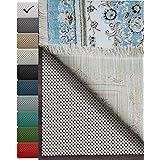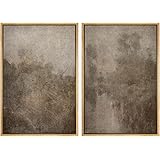Making a room feel larger is less about its actual square footage and more about the deliberate choices you make in its design. If you’ve ever walked into a room that felt surprisingly small despite its generous dimensions, or conversely, a tiny apartment that felt expansive and airy, you’ve experienced the powerful illusion of good design. The video above highlights 10 critical mistakes that can visually shrink your space, but understanding these pitfalls is just the first step; applying strategic solutions can dramatically transform your home.
Often, homeowners and renters inadvertently commit these errors, leading to cramped, uninviting environments. The good news is that these aren’t irreversible blunders, but rather common habits easily rectified with a thoughtful approach. By focusing on smart design principles, even the most modest rooms can exude an open, calm, and spacious ambiance. Let’s delve deeper into these crucial design elements and explore how to master them for truly transformative results in your small space design.
Embracing Verticality: Beyond Eye-Level Decor
Many people gravitate towards decorating the immediate eye-level, leaving vast expanses of wall space unused and creating a visually compressed environment. This oversight often manifests as shorter furniture pieces and artwork confined to the middle of the wall, which inadvertently makes ceilings appear lower than they are. The result is a room that feels squat and heavy, like a weighty anchor holding the space down. Instead of accepting this visual constraint, consider your walls as an untapped resource, stretching from floor to ceiling. This intentional use of vertical space is a cornerstone of effective small room design, directing the gaze upwards and creating an illusion of grandeur.
Rather than a wide, low credenza, imagine a tall, slender shelving unit that ascends towards the ceiling, drawing the eye naturally upward. Similarly, artwork isn’t just for the middle of the wall; hang a collection vertically or select a single large piece that fills more of the wall’s height. Think beyond static furniture; wall-mounted shelves, floating desks, or even a vertical garden can serve both functional and aesthetic purposes. When contemplating lighting, move beyond tabletop lamps that occupy precious surface area; tall floor lamps, elegant pendants, or stylish wall sconces can brighten dark corners and contribute to the upward visual flow, preventing your room from feeling trapped.
Windows are an unparalleled asset, showering your small space with essential natural light, yet they are frequently underestimated or mishandled. Heavy, dark curtains hung just above the frame can tragically block incoming light and visually chop off the wall, creating a boxed-in sensation. Conversely, mounting curtain rods as high as possible, almost at the ceiling line, and extending them several inches beyond the window frame allows the curtains to gracefully frame the glass rather than obscure it. This simple trick maximizes natural light and creates an unbroken visual line, making the entire wall appear taller and wider, as if it’s breathing freely.
The Power of a Cohesive Color Palette in Small Spaces
Contrary to popular belief, dark colors aren’t always the enemy in a small space; in fact, they can create a wonderful cocooning effect that feels incredibly intimate and sophisticated. However, the true culprit is a riot of disparate colors, each vying for attention and visually fracturing the room. When walls, trim, doors, and even ceilings are painted in clashing hues, your eye is forced to stop at every edge, making the space feel disjointed and chaotic. This visual stop-start mechanism prevents a smooth flow, ultimately making the room feel smaller and more agitated.
To combat this, embrace the art of cohesion by unifying your color scheme. Painting walls, woodwork, and even skirting boards in the same or closely related shades allows the edges to blur, creating an expansive, tranquil backdrop. This seamless transition makes walls appear to recede, fostering a sense of calm and continuity, akin to a gentle, uninterrupted melody. Similarly, maintaining consistent flooring materials throughout adjoining small rooms—be it sleek wood, continuous tile, or a uniform carpet—eliminates visual breaks and encourages an effortless flow. Opting for materials without busy patterns or heavy grains further enhances this clean, continuous aesthetic, making the small room design feel intentionally grand.
Mastering Furniture Scale and Visual Weight
One of the most pervasive small space design mistakes is the introduction of oversized, bulky furniture that devours precious floor space. A large, overstuffed sofa or a chunky dresser that sits flush on the floor might feel cozy, but it often works against the room, making it appear heavier and significantly smaller. This is where the concept of visual weight becomes paramount; furniture with a heavy visual weight can anchor a room down, while lighter pieces allow the space to breathe. The less floor you can see, the more constrained and limited your room will invariably feel.
To counteract this, prioritize low-profile furniture featuring visible legs or slender, elegant bases. When you can see the floor underneath a sofa, a cabinet, or a side table, it instantly injects a sense of openness and airiness into the room, like a delicate dance. Pieces with a streamlined design and clean lines further enhance this effect, allowing light and air to circulate freely around them, exaggerating the feeling of spaciousness. Mid-century modern designs, with their characteristic tapered legs and minimalist profiles, are particularly adept at achieving this light, floating aesthetic. Beyond freestanding pieces, consider wall-mounted furniture like floating shelves, bedside tables, or entertainment units; these smart solutions free up valuable floor space, making the entire small room design feel remarkably lighter and more expansive.
The Ingenuity of Multi-Functional Furniture
In a compact living environment, square footage is a luxury, yet the need for essential furniture pieces—a sofa, storage, a bed, a dining table—remains constant. Approaching a small home with a ‘one piece, one function’ mindset, as you might in a larger residence, will inevitably lead to a cramped, overstuffed space. This is where the strategic genius of multi-functional furniture truly shines, making every item in your small room design work harder, smarter, and double duty.
The key is to seek out pieces that offer versatility without compromising style or function. Ottomans that conceal ample storage, extendable dining tables that expand for guests and retract for daily living, or bookcases that ingeniously fold out into desks are all prime examples. Modular sofas, which can be reconfigured to suit different needs or room layouts, provide unparalleled flexibility. These ingenious solutions give you the functionality you require while consuming minimal floor space, like a clever chameleon adapting to its surroundings. Moreover, many multi-functional items inherently include bonus storage, an invaluable asset in any space-constrained home, helping to manage belongings efficiently rather than letting clutter accumulate.
Layered Lighting: Beyond the Single Overhead Glow
Many homeowners meticulously plan their color schemes and furniture layouts, yet lighting often remains an afterthought, relegated to a single overhead fixture. Relying solely on a ceiling light, whether a lone bulb or a series of downlights, inevitably leads to a flat, harsh, and uninspiring ambiance. These singular light sources project light directly downward, casting harsh shadows in corners and creating stark contrasts that shrink the perceived size of the room, making it feel darker and less inviting, much like a stage lit by a single, unforgiving spotlight.
The antidote is a carefully layered lighting scheme, akin to composing a symphony of light. This involves integrating three distinct types of lighting: ambient, task, and accent. Ambient lighting establishes the overall mood with a soft, diffused glow, often achieved through dimmable ceiling fixtures or strategically placed floor lamps. Task lighting is functional, illuminating specific areas for activities like reading or cooking, such as a desk lamp or pendants above a kitchen island. Accent lighting, meanwhile, highlights architectural features or artwork, adding dramatic flair with wall sconces or LED strips under shelves. By distributing light sources throughout the room, corners are gently illuminated, harsh shadows vanish, and your eye is guided smoothly around the entire space, creating an open, warm, and utterly inviting atmosphere, far removed from a dingy, one-dimensional cave.
The Strategic Magic of Mirrors
Often relegated to a purely functional role—a quick check of an outfit before stepping out—mirrors possess an unparalleled power to transform a small room into a vast, airy expanse. Far from being mere reflective surfaces, mirrors are design chameleons, capable of bouncing light, extending views, and creating an illusion of depth where none physically exists. Their reflective quality acts as a silent architect, adding perceived square footage without moving a single wall.
The strategic placement of a mirror can dramatically alter a room’s perception. Positioning a large mirror directly opposite a window not only amplifies the natural light streaming into the room but also cleverly doubles the outdoor view, instantly making the space feel larger and more connected to the exterior. Yet, placement is only half the story; the mirror’s shape and scale are equally critical. A tall, slender mirror can vertically stretch a wall, drawing the eye upward and exaggerating ceiling height, much like a vertical brushstroke. Conversely, a large, wide mirror can visually expand a narrow room, lending it a sense of grander width. Therefore, embrace mirrors as powerful design tools, not just utilitarian objects, using them intentionally to manipulate light, extend vistas, and cunningly enhance both the height and width of your small room design, even in the most awkward corners.
Conquering Visual Clutter for a Calm Home
A small room crammed to the brim with ‘stuff’ will inevitably feel smaller, suffocating under the weight of visual noise. When storage is an afterthought and decorative items proliferate unchecked, surfaces quickly become buried under an avalanche of knick-knacks, mismatched books, and random objects. This relentless visual bombardment overloads the senses, creating a chaotic environment that diminishes the perceived size and serenity of your space, much like a cluttered desk stifles clear thought.
Open shelving, while aesthetically pleasing in curated photos, can quickly devolve into a chaotic dumping ground in real life, making closed storage the superior choice for tight rooms. Cabinets with doors or drawers instantly conceal mess, creating a serene, uncluttered aesthetic that calms the eye and expands the perceived space. When it comes to decor, a minimalist approach almost always triumphs; instead of scattering numerous small objects across every available surface, group a few cherished favorites together, allowing them to make a significant statement. The rest should find a home behind closed doors or be thoughtfully rotated, ensuring that every item on display serves a purpose or evokes joy, transforming your small room design from overwhelmed to orderly.
Doors: The Unsung Heroes of Space Saving
Traditional hinged doors, with their wide-swinging arc, can surprisingly consume a significant amount of valuable floor space within a small room. In a compact bedroom, the radius of a door’s swing might obstruct the ideal placement of a dresser, a cozy chair, or even a clear pathway, effectively rendering a portion of the room unusable. This often overlooked design element can be a silent thief of precious real estate, impacting both functionality and flow. However, with thoughtful consideration, doors can transform from space-hoggers into ingenious solutions for maximizing room utility.
For homeowners willing to undertake structural changes, pocket doors are a stellar choice, vanishing seamlessly into a wall cavity when open, reclaiming an entire corner of the room. If a full pocket door installation isn’t feasible, folding doors offer a flexible alternative, opening wide without intruding deeply into the room, allowing the area behind them to be utilized for furniture or storage. Furthermore, subtle design details can make a significant difference. A jib or hidden door can ingeniously disguise messy storage areas, while a glazed or glass-paneled door invites natural light to flow between adjoining rooms, enhancing brightness and connectivity. Even simply painting a door the same color as the surrounding walls can reduce visual clutter, helping the entire small room design feel calmer, more cohesive, and inherently larger.
The Fluidity of Furniture Shape
Glance around most rooms, and a predominant theme emerges: everything is boxy. Rectangular dining tables, square coffee tables, bulky sideboards—these sharp angles, while practical, can inadvertently create a stiff, rigid atmosphere, hindering the natural flow of a small space. The proliferation of straight lines and sharp corners can make a room feel static and enclosed, like being trapped within a series of rigid containers. This rigid geometry, while sometimes providing a sense of order, often works against the innate desire for openness and movement in small room design.
Introducing curves into your furniture and decor can be a revolutionary act, breaking up these hard angles and allowing the room to breathe. A round dining table, for instance, is exceptionally well-suited for smaller spaces because its lack of corners makes it far easier to navigate around, promoting smoother circulation. Even a rectangular table with gently curved edges can soften the room’s overall aesthetic. Similarly, curved lamps, mirrors, or accessories inject a sense of movement and organic fluidity without consuming additional floor space. These rounded shapes foster a more inviting and relaxed atmosphere, transforming a potentially stiff and boxy vibe into one that feels lighter, more approachable, and effortlessly livable, enhancing the small room design with grace.
Crafting Cohesion: The Unifying Thread
Even if you meticulously avoid every mistake on this list, a room can still fall flat if it lacks cohesion, feeling disjointed and random rather than thoughtfully curated. Cohesion is the invisible glue that binds a space together, preventing it from appearing busy or disconnected, much like the harmonious notes in a well-composed piece of music. Without this unifying thread, the eye jumps from one element to another, unable to find a natural resting place, making the small room design feel visually chaotic and unsettled.
To cultivate cohesion, establish a common thread that subtly weaves through the entire space. This might involve repeating a specific color across various elements, such as cushions, artwork, and a decorative vase, creating a visual rhythm. Alternatively, maintaining the same wood tone through a few key furniture pieces or consistently using one metal finish for hardware and lighting fixtures can establish a sense of continuity. These subtle links guide the eye smoothly around the room, allowing it to perceive the space as a unified whole rather than a collection of disparate objects. While cohesion doesn’t demand perfect matching—which can make a room feel sterile—it requires a delicate balance: enough similarity to feel intentional, yet enough variety to maintain interest and prevent monotony, ultimately completing your small room design with elegant harmony.











